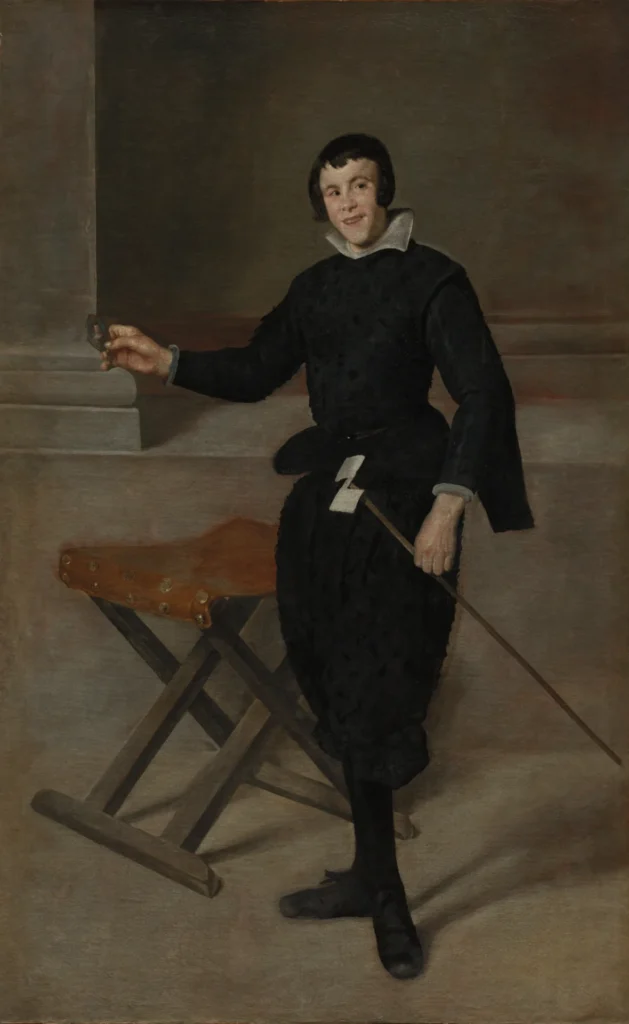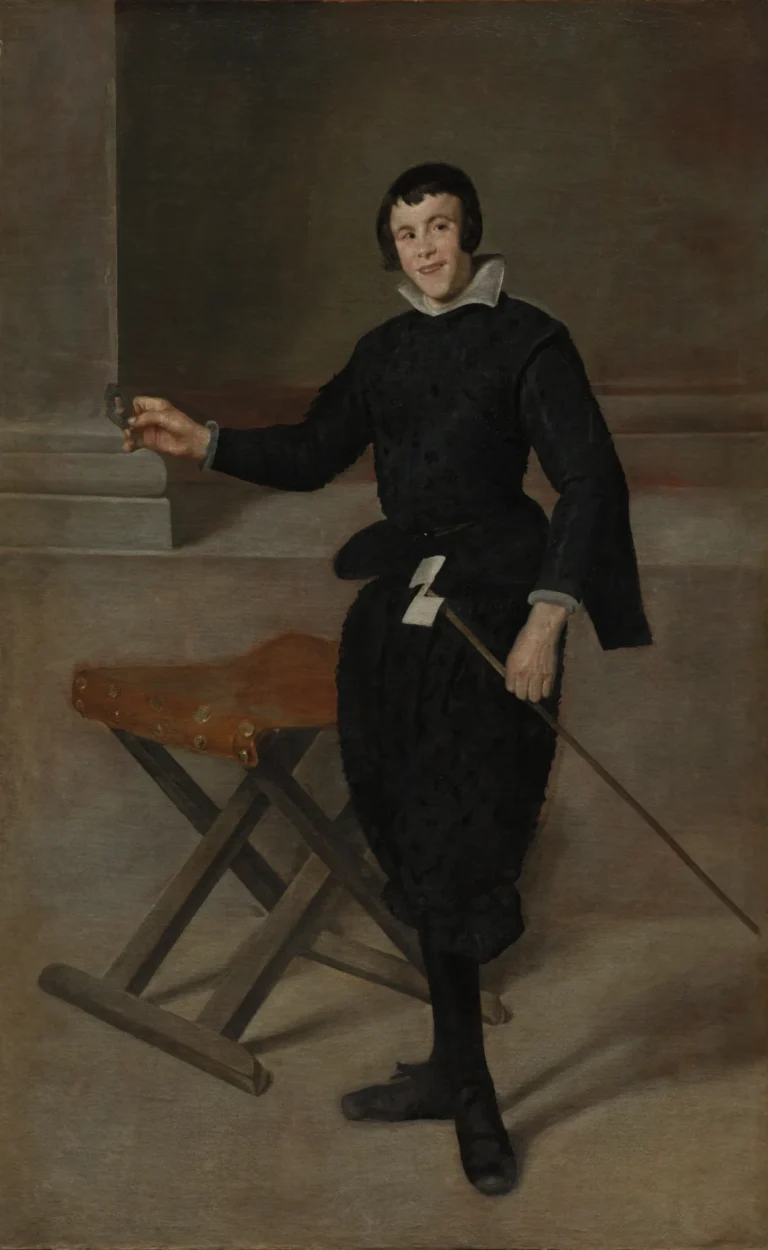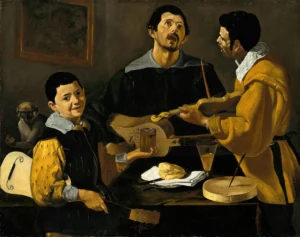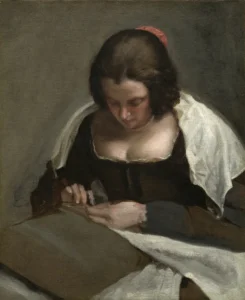Portrait of the Jester Calabazas (c. 1631–32)
Diego Velázquez's Portrait of the Jester Calabazas presents a striking portrayal of Juan de Calabazas, a court jester known for his complex personality and supposed disabilities. In this compelling composition, Calabazas holds a windmill and a miniature portrait, symbolizing the theme of love's transience. The painting is marked by Velázquez's signature realism and dignity, reflecting the artist's progressive approach to representing individuals with disabilities in a nuanced manner.
1631-1632
About the Artwork
The Portrait of the Jester Calabazas stems from Velázquez’s tenure at the Spanish court, where he frequently engaged with subjects not often depicted in art. Initially created for King Philip IV of Spain, the painting embodies both the jester's role in royal entertainment and the societal perception of individuals with disabilities. Critics suggest that Calabazas may have experienced conditions that made his performance deeply poignant and rich with irony. The fate of the artwork mirrors that of its subject; once part of the Buen Retiro Palace, it traversed through history before finding its place in the Cleveland Museum of Art, highlighting the enduring impact of Velázquez’s work in the art historical canon.
Did You Know
Liked what you see? Add it to your collection.
Enjoyed reading? Share it.
... continued
Artist and Attribution
The painting is attributed to Diego Velázquez, although there are some doubts regarding its attribution. José López-Rey, for example, supports the attribution based on stylistic similarities to other works by Velázquez, such as the treatment of the face in 'The Triumph of Bacchus.'
Subject
The subject of the painting is believed to be Juan de Calabazas, a jester at the court of King Philip IV of Spain. Calabazas is depicted holding a small toy windmill (often described as a wind-driven pinwheel) in his left hand and a miniature portrait of a woman in his right hand. These items are interpreted as symbols suggesting the inconstancy of love.
Physical and Mental Condition
The jester is thought to have had physical and mental disabilities. Psychologist Jerónimo de Moragas suggests that Calabazas may have had cerebral palsy, which affects the coordination of the brain and the body, rather than an intellectual condition.
Provenance
The painting likely originated in the Buen Retiro Palace in Spain before being seized after the French occupation in 1808. It was later exhibited at a retrospective on Velázquez in Paris in 1866 and was owned by the Duke of Persigny. The painting was sold at Christie's in London in 1965 for 170,000 guineas and is now part of the collection at the Cleveland Museum of Art.
Style and Significance
The painting reflects Velázquez's realistic and matter-of-fact style, which was characteristic of his work. The artist's approach to depicting individuals with disabilities was notable for its dignity and lack of commentary, highlighting the social and cultural attitudes of the time. The painting also shows influences from other artists, such as Caravaggio, and has inspired later artists like Francisco de Goya.
Dimensions and Condition
The painting measures 175 cm (69 in) by 106 cm (42 in). However, it has undergone significant changes, including a later re-stretching of the canvas, which has affected the paint surface.










